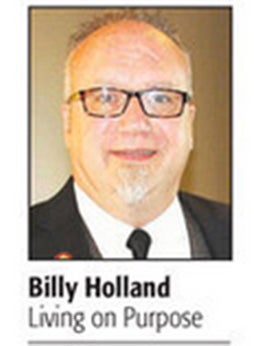A different Robert E. Lee was Kentucky Unionist
Published 3:25 pm Thursday, December 20, 2018
By Stuart W. Sanders
Guest columnist
Civil War soldier Robert E. Lee lies buried in Lincoln County, Kentucky.
No, not that Robert E. Lee.
This Lee wasn’t the commander of the Army of Northern Virginia who surrendered to Union General Ulysses S. Grant at Appomattox Courthouse.
This wasn’t the Robert E. Lee for whom statues were dedicated and high schools were named.
Instead, this Robert E. Lee was a Union cavalryman who served in Company B of the 13th Kentucky Cavalry.
Although this Lee never led armies, his life illustrates how 19th century Americans faced issues that we still contend with today.
Born in Casey County, Ky., on May 16, 1845, Robert was likely the eighth child of Stephen and Harriett Lee. According to the 1850 census, Robert’s father was 43 years old when he was born, while his mother was 38.
Robert had a modest upbringing. His father, who could neither read nor write, was a blacksmith of simple means. By 1860, he owned a personal estate worth about $500.
While growing up, Robert likely helped his father with blacksmithing. The Civil War, however, interrupted his work. In 1863, at age 18, Robert joined the Union army and became a private in the 13th Kentucky Cavalry.
Records reveal little about Robert’s military service, but, as the son of a blacksmith, he was likely a valuable member of the regiment, helping with horseshoes and other equipment. In January 1865, Private Lee mustered out of the service at Camp Nelson in Jessamine County.
On June 27, 1866, he married Harriet F. Clarkson in Casey County. Four years later, the 25-year-old Lee and his family lived in Liberty, where he worked as a mill hand. The couple had two daughters, Harriet and Mary, ages 3 and 1. He also had $100 in his personal estate.
By 1880, the Lee family had moved to Lincoln County, where Robert worked as a laborer. By then he and Harriet had three other children, including Margaret (age 9), Martha (6) and Julith (11 months).
That year’s census reveals that neither Lee nor his wife could read or write. They were, however, able to improve their status. By 1900, they owned a house and farm near Liberty. While none of his children lived at home, his granddaughter, the 6-year-old Deletta Nearns, lived in the household.
On February 12, 1911, Lee’s wife died and was buried in Poplar Grove Cemetery in Liberty. Two years later, Lee married Millie Ann Young, a widow whose husband had died in 1910.
Lee died in Lincoln County on May 7, 1931. He was 86 years old. He was buried at Mt. Moriah Church, located south of Stanford near Hall’s Gap. A military headstone, ordered by his wife, was installed at his grave about a year later. When she died in August 1932, she was also buried at Mt. Moriah.
Although few remember Kentucky’s Robert E. Lee, what can his life teach us about our past and present?
First, Lee’s family shines a spotlight on Kentucky’s 19th century education system. Many Kentuckians were poorly educated at the time, and many laborers could neither read nor write. Lee was illiterate, as was his father and several of his children. Therefore, for Lee, a lack of educational attainment was multi-generational, a problem that still persists today.
Although Lee could neither read nor write, upward mobility was possible. While Lee’s father was a blacksmith with $500 in his personal estate, by the early 1900s, Robert owned his own home and farm and was probably self-sufficient.
Examining Kentucky’s Robert E. Lee also shows that family situations have always been complicated. Just as many grandparents care for their grandchildren today, Lee’s 6-year-old granddaughter was living with him in 1900. We don’t know the circumstances that led to this situation, but many of the causes—be it poverty, substance abuse, mental illness, death of a parent or mistreatment of the child—still affect society. And, like many modern grandparents, the Lees stepped up and cared for their granddaughter.
Importantly, Lee’s life shows us that even the study of an unknown man like him can illuminate a broader narrative. The same problems that Lee faced—gaps in the educational system, working to do better than one’s parents and a complicated family situation—are issues that persist in modern Kentucky.
Perhaps a deeper investigation of Lee’s generation—hardworking Kentuckians of little education and few means who came of age during and after the Civil War—can help us craft solutions for these similar problems that we face today.
Stuart W. Sanders is the Kentucky Historical Society’s history advocate.




